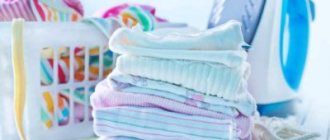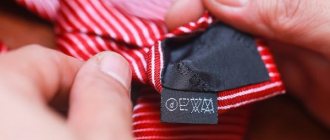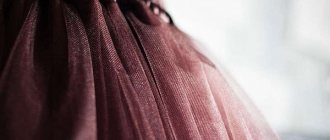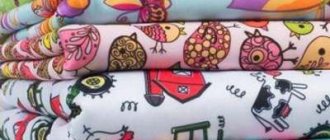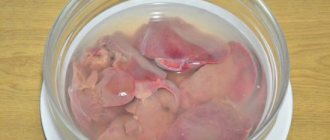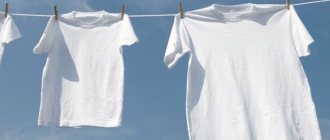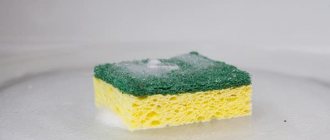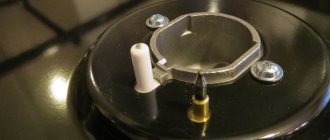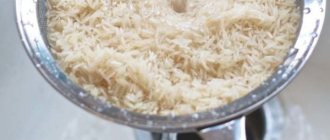In matters of caring for a baby, we are accustomed to listening to the advice of doctors, the older generation, and experienced friends. We follow certain canons developed over many years. After all, you want to do everything “as it should” and not do it “as it shouldn’t.” Should a newborn's diapers be ironed? You won’t believe it, but this is the question that causes the most intense discussions on women’s forums. Moms are divided into two camps. The former iron diapers and all children's things on both sides, the latter claim that ironing is a completely useless activity that is not worth wasting precious time on. The former accuse the latter of sloppiness, untidiness and uncleanliness, while the latter accuse the former of excessive pedantry and outdated views. How to reconcile two warring camps? Is there any scientific view on the issue of ironing baby diapers?
Why iron diapers?
The habit of steaming babies' clothes and diapers has been criticized by immunologists. Previously, young mothers were deprived of such benefits of civilization as disposable diapers, automatic machines and baby powders, and careful ironing made sense.
A newborn baby is defenseless against infections, especially in the first 2 weeks, until the umbilical wound has healed. Lacking convenient hygiene products, we previously used reusable cloth diapers. Diapers inevitably absorbed leaking contents, becoming a breeding ground for bacteria.
Hand washing did not provide sterility, and boiling made the material too harsh for delicate skin. The only way to provide the child with clean diapers was ironing on both sides. The high temperature killed germs, and mothers could not be afraid of introducing an infection into the unhealed navel. For the same reasons, at first it was recommended to bathe the child in a weak solution of potassium permanganate and regularly treat the wound with an alcohol antiseptic.
Now there is no requirement to additionally disinfect diapers after washing. When using diapers, the baby's things remain practically clean. Washing at 90°C with detergent does a good job of disinfecting fabric.
Creating sterility by ironing is a myth. Particles of dust and microbes from the air instantly land on an item coming out of the iron, but they are unlikely to cause any significant harm to the child. The immune system must train itself to fight bacteria and viruses. Therefore, many pediatricians are against creating artificial sterility around a newborn and recommend not to be overzealous with disinfecting children's undershirts and toys.
The problem of “ironing or not” lies rather on an aesthetic plane. Ironed items look neater than those simply taken off the line. Many people are accustomed to ironing clothes and linens, regardless of whether there is any practical purpose other than to look neat. They just don't like wrinkled things.
But there is another category of mothers who refuse to iron diapers in favor of relaxation and free time. A healthy child will not suffer from this in any way. It is enough to follow the rules:
- wash children's underwear separately from adults;
- choose high temperature mode;
- use hypoallergenic baby powder;
- dry at home so that street dust does not settle on the fabric;
- Carefully hang the washed laundry, carefully straightening out the folds.
The exception is new items from the store. They must be washed and ironed on both sides. It is not known where they were stored, it is better to play it safe and thoroughly disinfect the laundry.
It won’t hurt to steam the diapers and clothes of a weakened, premature baby. If a child suffers from diaper rash, irritation, dermatitis, the skin should not come into contact with folds, seams and rough fabric.
If necessary?
There is no consensus on this issue (whether it is necessary to iron a newborn’s clothes), but pediatricians unanimously declare that it is still necessary to iron a newborn’s clothes. Why iron a newborn's things? There is a reason for this.
The fact is that during ironing the fabric is exposed to high temperatures, which are destructive to bacteria. The same effect can be observed in boiling water or milk - disinfection occurs.
Baby and pediatrician
The immunity of newborns is still very weak and the health of babies is easily vulnerable. Therefore, when asked whether it is necessary to iron a newborn’s clothes after washing, doctors answer that this should be done at least until the umbilical scar heals.
In addition, there are a number of other reasons why you should iron things for your baby:
- Ironed items are much more pleasant to the touch. A newborn's skin is very sensitive, and freshly washed items can be harsh on it.
- The iron smoothes the seams of the product, which means they will not scratch the skin and cause discomfort.
- If the clothes are new, then they have probably collected a lot of dirt and germs in the warehouse and factory. It must be washed, and ironing will disinfect the fabric to the ground.
- Ironed clothes look more beautiful and neater than wrinkled ones after washing.
At what age should children's clothes be ironed?
The first months of life, a newborn needs special care. Its own immunity has not yet been formed; the body is protected only by antibodies received from the mother in the womb and through breast milk.
The main entry point for infections in the first days is the umbilical wound. Until it heals, it is better to avoid contact with dirt. Each child's scar heals differently, but on average it takes 14 days. To prevent inflammation, it is advisable to iron undershirts, rompers and diapers. With a healed navel - it’s no longer necessary.
Then each mother makes her own decision whether to iron the clothes. Arriving from the maternity hospital, the child is faced with an attack of foreign microflora. On the one hand, he must get used to his natural habitat, on the other hand, he must not catch a serious infection.
The task of parents is to create conditions where the newborn is well protected from pathogenic microbes, but is not in sterile cleanliness. It is useful for the immune system to have something to “train” on.
The adaptation period lasts about three months. From this age, it makes no sense to disinfect everything the child touches. His body is already able to cope with microbes.
Little tricks to make work easier
If ironing children's clothes is an obligatory ritual in the house, you cannot do without special devices:
- An iron with a steam function will save time and also make the ironing process easier.
- An ironing board with a height adjustment mechanism can be adjusted to suit a person of any height. This is especially true for families where the “ironing duties” are performed by different people.
- In order not to clutter up the space in the apartment with a “children’s” ironing board, it is enough to purchase a second cover. It is used only when you need to iron a baby's clothes. This way you can follow doctors’ recommendations without sacrificing free space.
- Different fabrics require different processing temperatures. Having sorted things in advance according to these indicators, you will be able to iron them without the risk of accidental damage.
The most important thing is that a young mother should learn to delegate authority to her family. A husband or grandmother can handle the ironing; all that remains is to put the ironed items in the closet. At this time, it is better for the mother to monitor the child so that he stays away from the ironing board.
Ironing methods
Newborn clothes are ironed in three ways:
- On the one side;
- on both sides;
- steaming.
Good, powerful irons iron right through thin fabric. There is no need to process the diapers on both sides, just go one at a time.
The clothes of an older child are also ironed from the inside out - where the item comes into contact with the body. Only the baby's undershirts are ironed on both sides: first from the inside, straightening out the folds, then from the front, smoothing out the seams.
Using steam makes caring for things easier, saving mom's energy and time. Using a steam generator, you can quickly process several layers of fabric at once - fold the diapers into a stack and iron them.
Double-sided ironing
Most housewives prefer to iron clothes on both sides, without even thinking about why it is needed. In fact, there are no objective reasons for excessive diligence. As a rule, our grandparents give this advice.
The fact is that modern irons are very different from those that were invented decades ago. Therefore, it is not surprising that the question of how to iron things for newborns could previously cause a considerable amount of difficulties.
However, today we can safely say that electrical devices meet all quality standards, so there is no need to add more work to yourself - ironing children’s clothes on one side will be quite enough.
Now you know everything about whether you need to iron a newborn’s diapers, as well as his clothes. If you lack motivation, just remember: half an hour of ironing burns about 400 kcal, which helps maintain a slim figure. Good luck!
How to iron clothes for a newborn
Before ironing, clothes are sorted by material to set the iron to the correct setting. It is usually indicated on product labels. The table shows the main types of “children’s” fabrics and ironing temperatures:
| textile | ironing temperature, °C |
| chintz | 170 |
| calico | 200 |
| flannel | 150 |
| mahra | don't iron |
| cooler | 110 |
| interlock | 110 |
By violating the recommendations, there is a risk of ruining the item. An overheated iron makes the fabric rough, rough, and disrupts hygroscopicity, which is contraindicated for children's underwear. For better smoothing, the function of steaming and spraying water will be useful; if you don’t have it, use a hand sprayer.
Clothes are always ironed from the inside out, starting with small parts (sleeves, pockets). When you need to iron it on both sides, the item turns inside out.
Linen and diapers cannot be stored immediately; they must cool on the ironing board. Then hang it up or put it on a closet shelf.
When can you partially iron?
• Shake and straighten items thoroughly before drying. After things have dried in this way, they become softer and some of them do not require ironing. The rest are easier and faster to iron.
• Do not iron children's bedding and towels. They will wrinkle 5 minutes after use. In addition, ironed fabric absorbs moisture and natural skin secretions less well.
• Try to purchase wrinkle-resistant items. Such clothing contains the “Non iron” label. This means no ironing is required. Some manufacturers specifically add 5-10% synthetics to their compositions - such clothes breathe well and wrinkle less.
What do pediatricians say about ironing baby clothes?
Some pediatricians insistently repeat at every visit to a newborn that things must be ironed carefully, on both sides, paying special attention to the seams. They give detailed recommendations on how much time to iron diapers for the back and front sides, how to iron the sliders so as not to forget about the elastic band on the waist, and give out a lot of useful information.
Other doctors are inclined to believe that the most important thing for a baby is a healthy and rested mother, and only she should decide whether the diapers need to be ironed so painstakingly. Modern washing in automatic machines at high temperatures using good powders and bleaches leaves no chance for most germs.
What to do to avoid ironing clothes
To keep things looking neat and presentable without ironing, use the drying function in the washing machine. To do this, set the mode to 400-450 rpm. Choose clothes made from soft fabrics, as dense ones wrinkle a lot. Give preference to natural materials. They are not only durable and reliable, but also allow the baby's skin to breathe.
Wash children's clothes separately from others! When washing, do not use a spin cycle and, if possible, turn on the boiling mode. To avoid ironing clothes, it is enough to dry things properly after washing. To do this, do not wring out the products, but immediately after water procedures, hang them on hangers and straighten them thoroughly.
Washed items can be laid out on a horizontal surface rather than hung. Then they definitely won’t get wrinkled. If you are hanging clothes with clothespins, pinch at the seam. Hang sweaters, shirts and other similar items of clothing on hangers.
At the same time, during the drying process, periodically stretch the material with your hands in different directions.
This will prevent the formation of creases and folds. You can dry things at room temperature or in a room with good ventilation. After drying, carefully fold the laundry and put it on the shelf. Subscribe to our VKontakte group

